Rhodesian Air Training Group (RATG) – a high price was paid in young lives
Much of the information below was originally included in the article The Rhodesia Air Training Group (RATG) 1940 – 1945 and statistics on fatalities from the Commonwealth War Graves Commission (CWGC) included under Harare on the website www.zimfieldguide.com that has now been renamed The Rhodesia Air Training Group (RATG) 1940 – 1945.
All the photographs in this article below, except those of the Commonwealth War Graves Commission (CWGC) Cemeteries, came from Richard and Peter Dodd and were taken by their father, Gordon Dodd,[i] who enlisted in the RAF a year or so before the start of the war. His sons believe he spent most of the war years in Southern Rhodesia at Induna airfield at Bulawayo, Matabeleland as part of the Rhodesian Air Training Group that trained thousands of young pilots and aircrew to fly as part of the war effort. This article focuses only on the fatalities that occurred during the war time period of the RATG and Gordon Dodd’s photographs.
Gordon Dodd was part of a recovery team that collected RATG airplanes after they had crash landed or crashed whilst on training flights, brought them back to Induna airfield, and either managed to rebuild them from the still usable sections or presumably cannibalised them for spare parts.
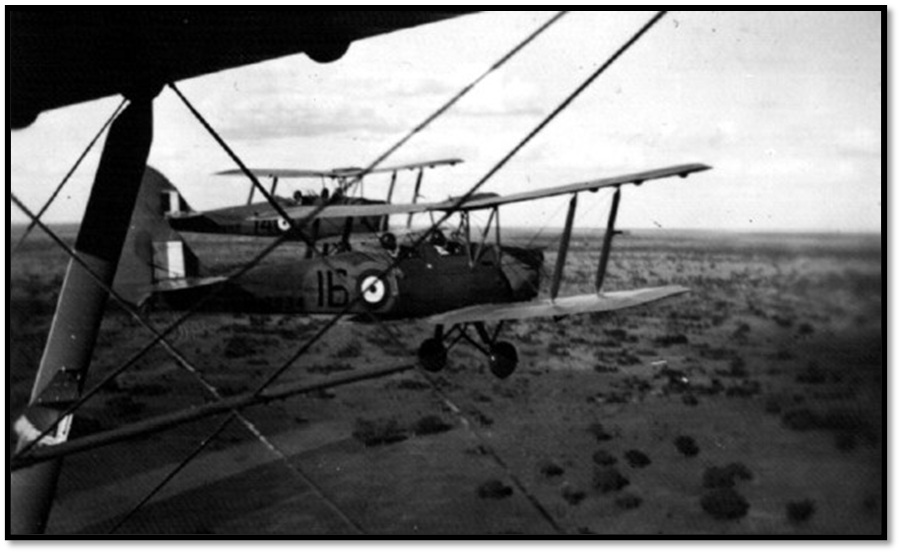
Photo by Gordon Dodd courtesy of Richard and Peter Dodd – Tiger Moth formation flying over Matabeleland
Fatality Statistics on the RATG programme
Sergeant Ivan Campbell was the first RATG casualty on 20th June 1940 when he crashed outside Salisbury close to the Gatooma (now Kadoma) road. The last was RAF Flight Lieutenant Harold Victor Redman, aged 51 years who died on 18th December 1947 and who had served in WWI, was married, and was buried at Mutare, formerly Umtali Cemetery. In between those dates the Commonwealth War Graves Commission records an additional 444 names on graves from the official number of 8,235 who went through the training program in Southern Rhodesia; a fatality rate of 5.4%; we have no figures for those who were injured but survived.
The pie chart below uses figures of fatalities from the Commonwealth War Graves Commission website (www.cwgc.org) to show deaths by unit within the RATG. The Royal Air Force Volunteer Reserve and Royal Air Force units suffered 71% of the training fatalities within the RATG program; but the Rhodesia Air Askari Corps also suffered 16%; presumably from ground accidents and fever rather than air accidents.
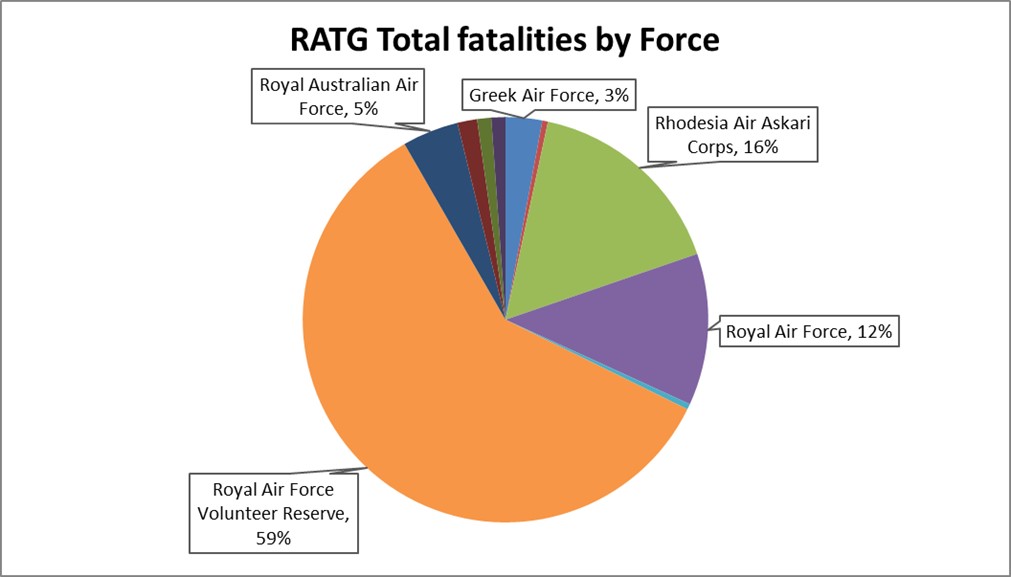
All units that suffered casualties are shown in the table below:
The bar chart below shows that the peak period of fatalities was 1942 to 1944 when each year suffered over 90 annual fatalities, that is a fatality on average every four days. Presumably this is because they were the years of maximum training effort, both 1940 and 1946 periods covered just six months and the training program was building up in 1941 and tailing off in 1945.
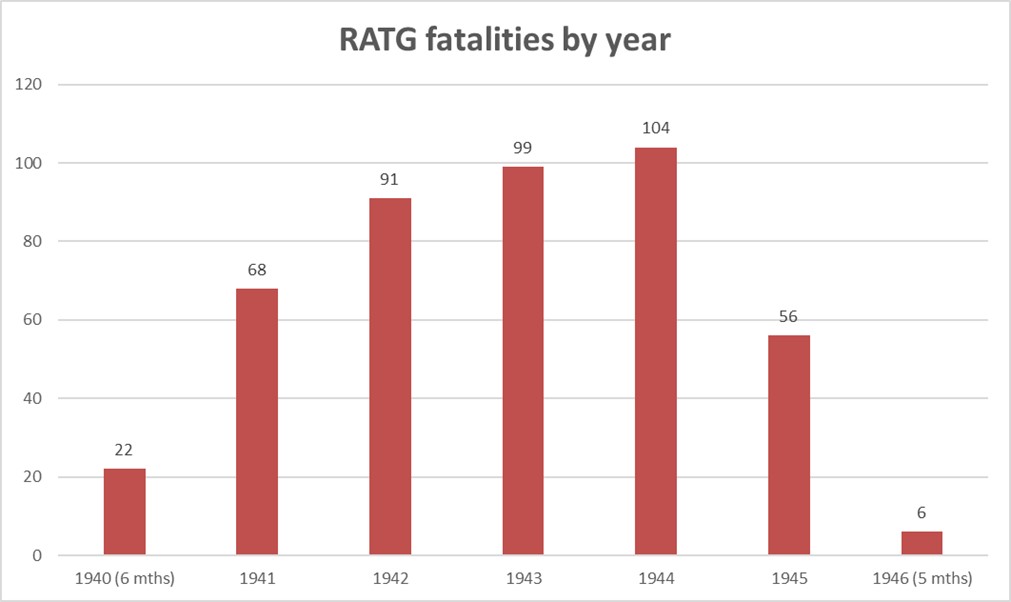
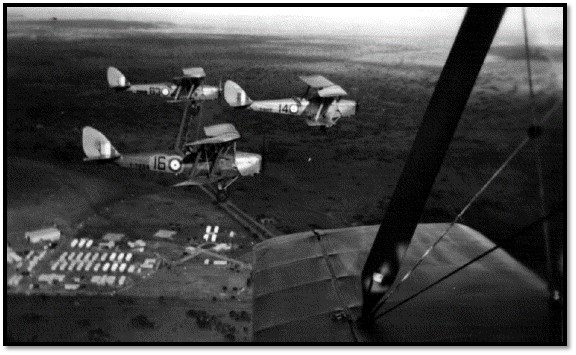
Photo by Gordon Dodd courtesy of Richard and Peter Dodd – Tiger Moth’s formation flying
A total of 446 graves are maintained by the CWGC that are related to the RATG programme; 376 (84%) are European males, 65 (15%) are African males and 5 (1%) are European females. The African males were members of the Rhodesia Air Askari Corps and the females were all aircraftswomen, clearly the fatalities in these groups were not related to flying training.
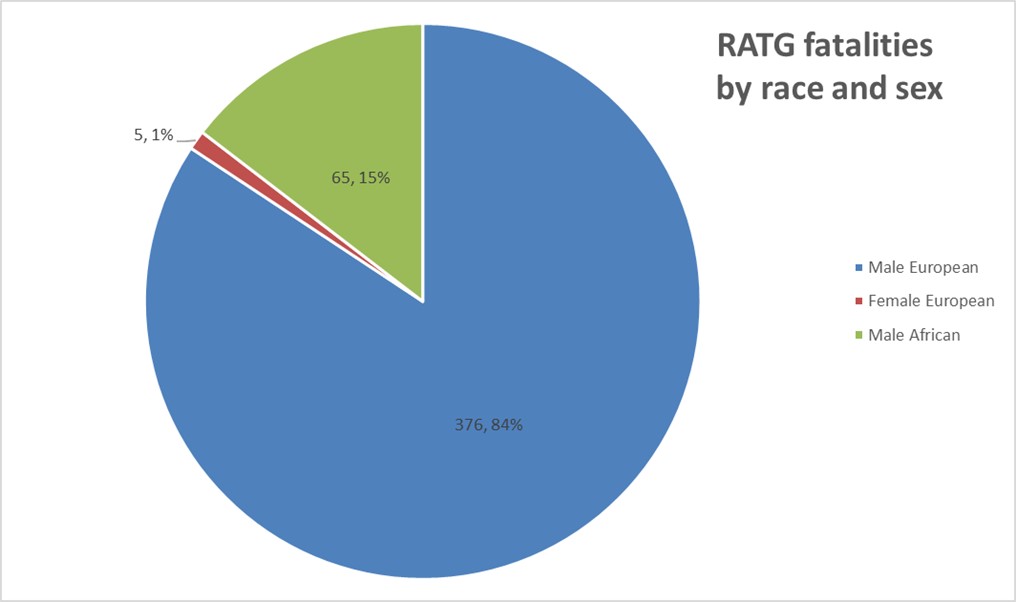
The line chart below tracks the record of monthly fatalities starting in June 1940 up to December 1946. The worst individual months of WWII for the RATG were in December 1942 and December 1943 when fourteen deaths were recorded in each of those months. There were monthly RATG fatalities in every month from June 1940 through to December 1945; only in 1946 when training tailed off were there months when no fatalities were recorded.
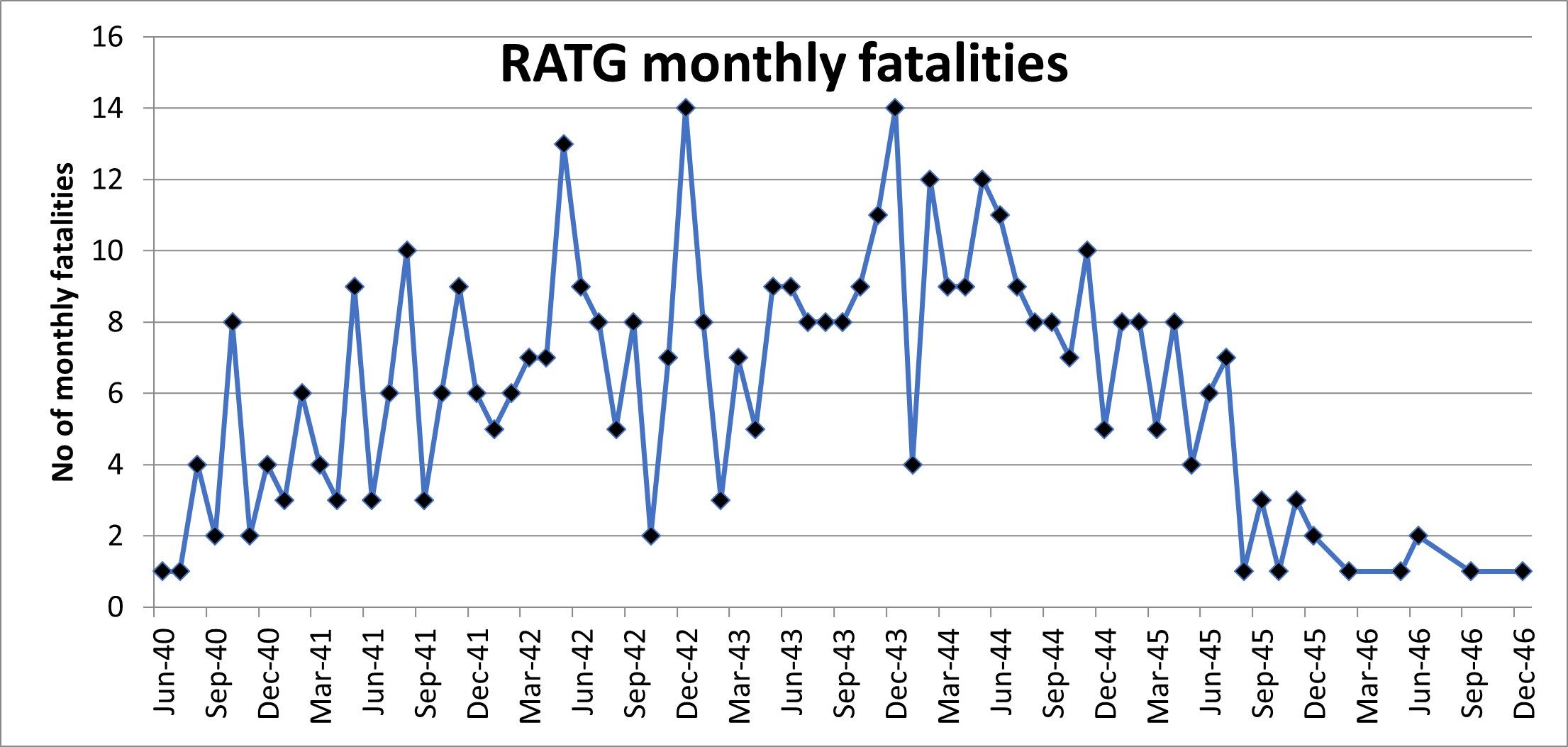
Certain months recorded extremely high numbers of fatalities. Within the period June 1940 to December 1946 there were twelve months that had eight fatalities in each month and nine months that recorded nine fatalities in each month. The extreme right of the bar chart records the two months when there were fourteen fatalities in each month.
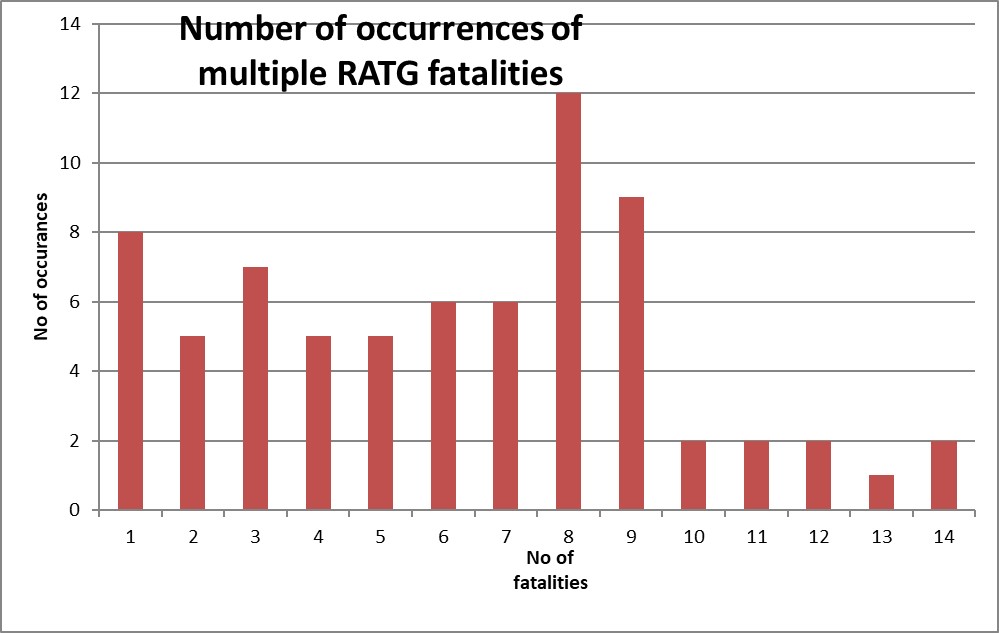
The majority of twin fatalities occurred because the training aircraft were designed for learner pilots to be accompanied by an instructor. In the De Haviland Tiger Moth[ii] the pilot sat in the back where there was better all round visibility, in Fairchild Cornell’s the front seat sits fairly forward of the wing and so the pilot sits in the front. The Harvard has pilot controls in both the front and back seats although when flying solo the pilot flies in the front seat. The Avro Anson and Airspeed Oxford’s all had dual controls and two seats side by side for the learner pilot and instructor.
Clearly in many fatal accidents both pilot and instructor were included. Triple fatalities would occur where Avro Anson’s or Airspeed Oxford’s were also carrying out bombing or navigation training and if the dorsal turret was fitted even air gunner training. The one air accident at Bulawayo that involved four fatalities might also have included a radio operator.
The Avro Anson’s and Airspeed Oxford’s were used for bomber training that was carried out at Bulawayo at Kumalo and Heany and at Gwelo at Moffat and this accounts for almost all the triple accidents occurring at these airfields.
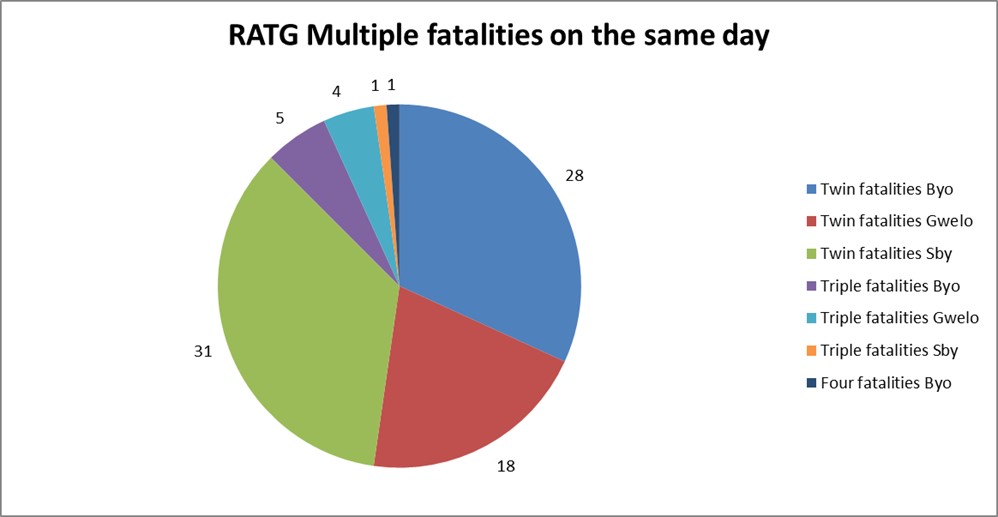
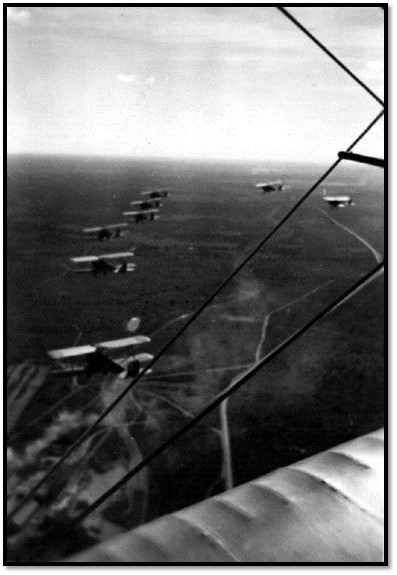
Photo by Gordon Dodd courtesy of Richard and Peter Dodd – at least nine Tiger Moth’s flying in formation
The line chart below plots the ages of the RATG fatalities where they are recorded; 319 of 446 (72%) As might be expected of training aircraft crew they are mostly very young with 71% of them being either 26 years old or younger.
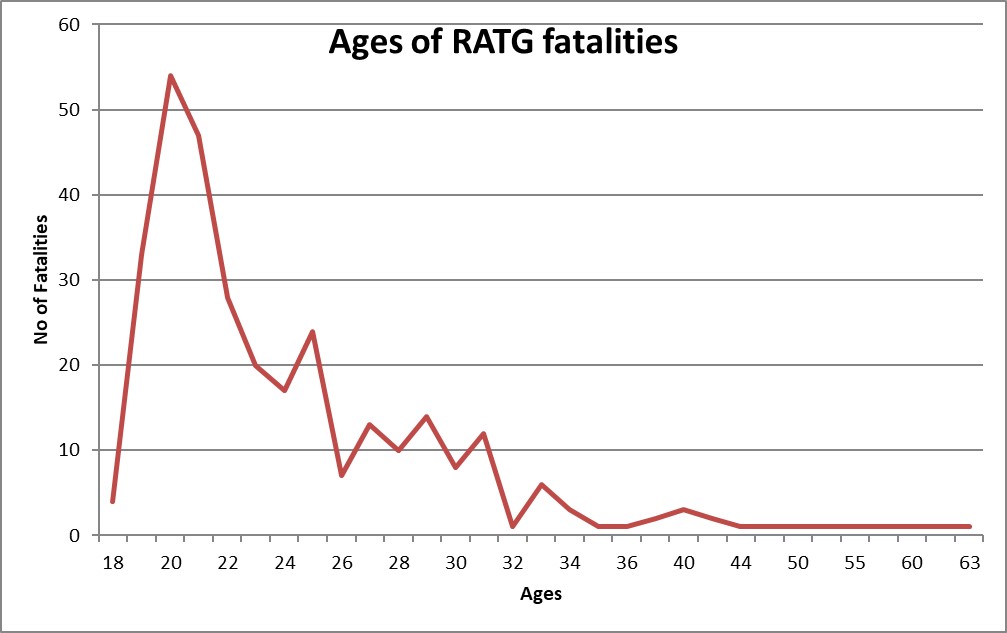
The names of the four youngest learner pilot fatalities who were eighteen years old are included below. Also included are all those fatalities in the RATG that were fifty years old or older. These were most probably flying instructors who had pupil pilots under instruction and were involved in fatal flying accidents. The most senior is Air Commodore JWB Grigson; the oldest is Squadron Leader EH Davy who was 63 years old.

There are many days that included twin, or even triple fatalities when presumably the entire crew of a single, or twin engined aircraft perished. There were few triple fatalities at Salisbury as training here was for single engined fighter aircraft. Crew members training as bomber crew flew in twin engined aircraft at Gwelo and Bulawayo. The worst single day was five fatalities on 29 May 1942.

The standard rank for pupil pilots was sergeant and therefore it is not surprising that they suffered the most fatalities with 166 (37%) of total deaths in the RATG. They were followed by 125 fatalities (28%) of mainly aircraftmen, but also five aircraftwomen.
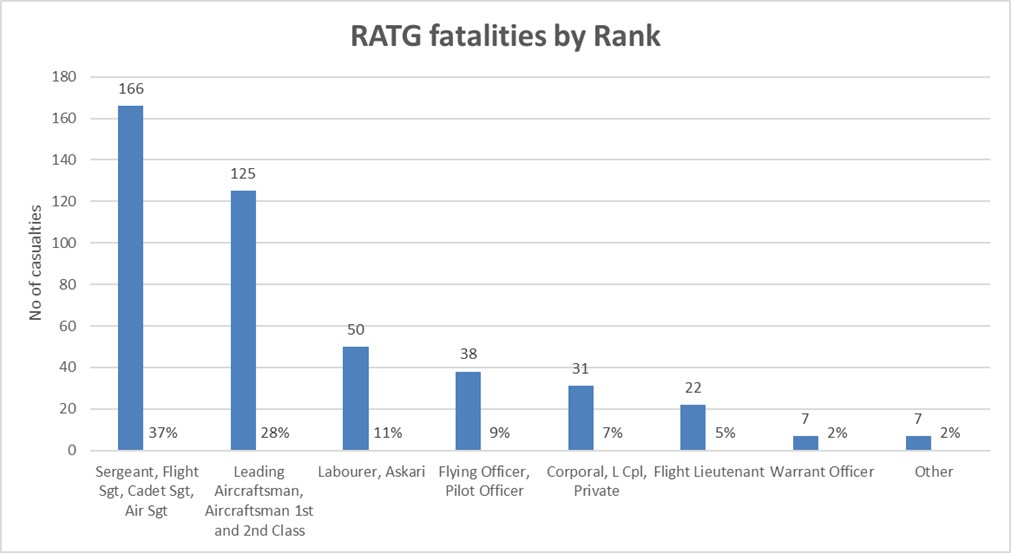
Other includes an Air Commodore, three Squadron Leaders, a Captain and a Pupil Pilot and a Cadet Pilot
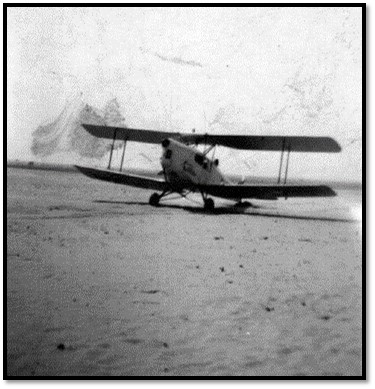
Photo by Gordon Dodd courtesy of Richard and Peter Dodd – a Tiger Moth forced landing in very sandy conditions?
The pie chart below shows where the RATG fatalities are buried within the Commonwealth War Graves section of each cemetery. Bulawayo has three cemeteries to honour 176 fatalities (39%) Gweru has 86 fatalities (19%) and Harare Pioneer cemetery has 178 fatalities (40%)
The remaining 6 fatalities (1%) are buried / cremated as follows, presumably near their families:
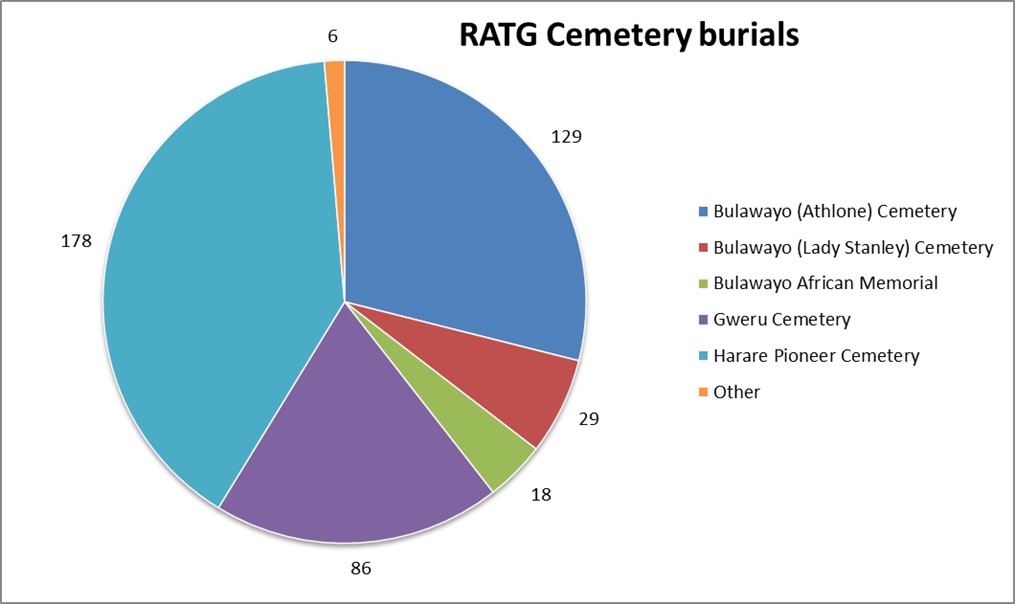
The cemeteries under their care are kept in immaculate condition by the CWGC. When the author visited Gweru, a team was mowing the lawns and clipping the surrounds, the remainder of Gweru cemetery was utter confusion, with many older graves disturbed and new graves being dug in haphazard fashion.
The 2023 Google Earth image of Harare Pioneer Cemetery shows that it has been completely burnt out by a grass fire with only the CWGC section unburnt because it has been cared for and not been allowed to get overrun by undergrowth. The staff at this municipal cemetery told me their salaries were 3-4 months in arrears and they were all driven to get second jobs to provide for their families. Any visitors should note that the staff are frequently away – get a telephone number and arrange a visit when they are present as the cemetery logbooks are available and useful and the staff will generally guide visitors for a small gratuity. There are many homeless people in the Harare Pioneer Cemetery and a staff escort should be seen as a necessity.
Inside the repair hanger at Induna airfield
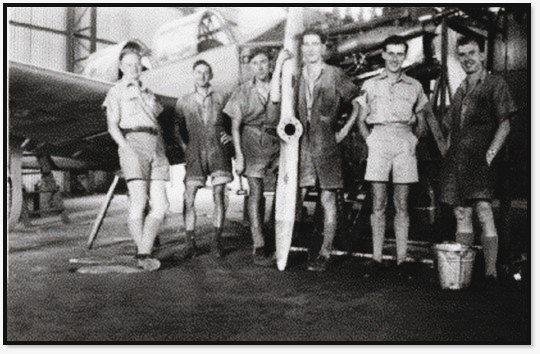
Photo by Gordon Dodd courtesy of Richard and Peter Dodd – Induna airfield hanger, Gordon Dodd on the left, looks like a Fairchild Cornell in the background[iii]
It looks like the entire team has picked up the local habit of wearing shorts!
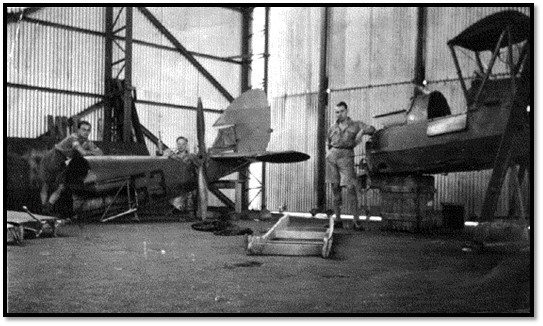
Photo by Gordon Dodd courtesy of Richard and Peter Dodd – Induna airfield hanger, sections of a Tiger Moth being rebuilt
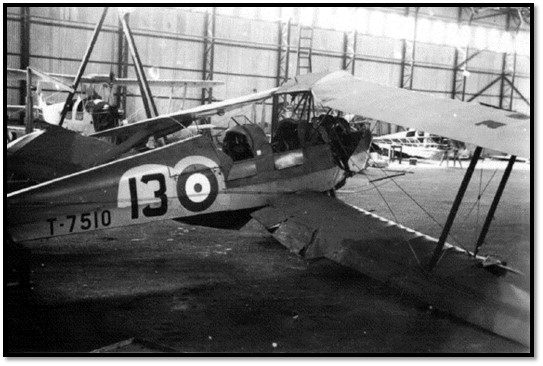
Photo by Gordon Dodd courtesy of Richard and Peter Dodd – Tiger Moths being repaired and rebuilt
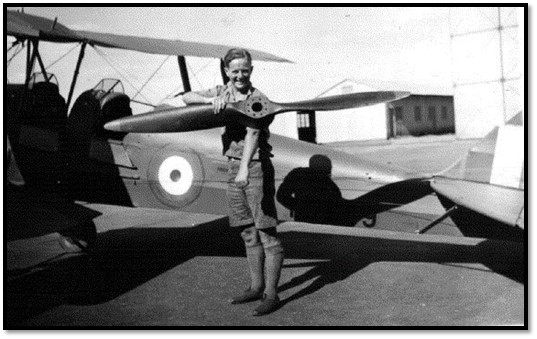
Photo by Gordon Dodd courtesy of Richard and Peter Dodd – Induna airfield, Gordon Dodd holding the propellor of a Tiger Moth
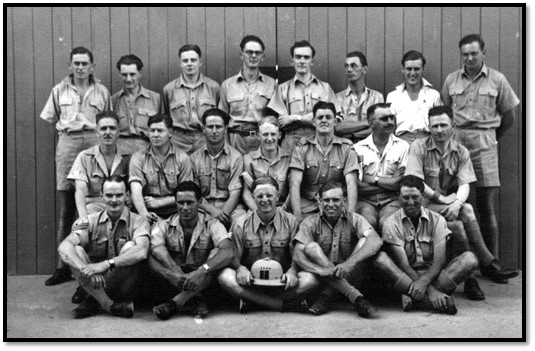
Photo by Gordon Dodd courtesy of Richard and Peter Dodd – Induna airfield repairs and rebuilding team, Gordon Dodd in the centre front with the pith helmet
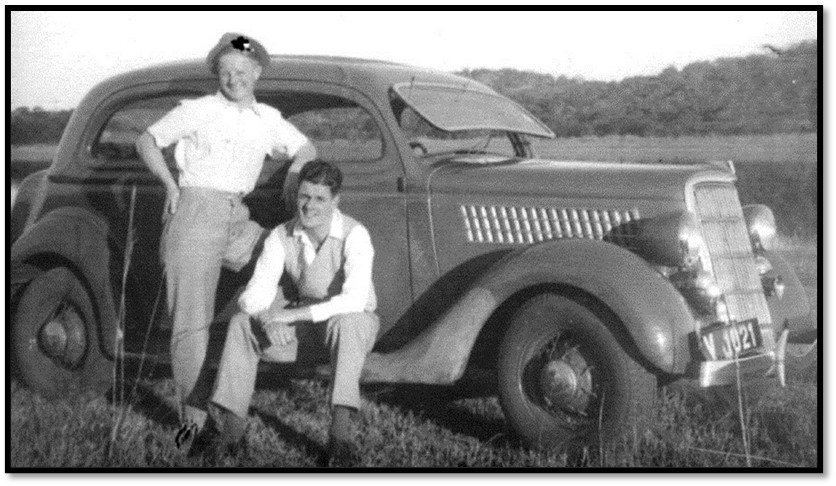
Photo by Gordon Dodd courtesy of Richard and Peter Dodd – Gordon (L) and pal with a Ford V8, probably a RATG staff car
Transporting wrecked Tiger Moth’s back to Induna airfield
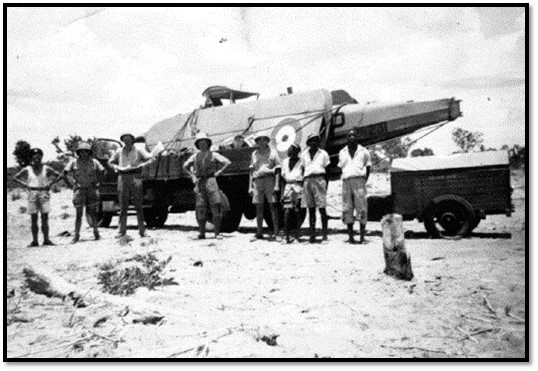
Photo by Gordon Dodd courtesy of Richard and Peter Dodd – transporting a wrecked Tiger Moth back to Induna airfield assisted by members of the Rhodesia Air Askari Corps
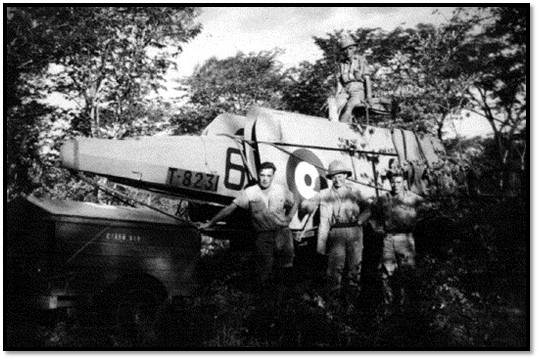
Photo by Gordon Dodd courtesy of Richard and Peter Dodd – transporting the wing sections of a wrecked Tiger Moth from the Matabeleland bush
Various Tiger Moth crash landings where the pilots probably survived
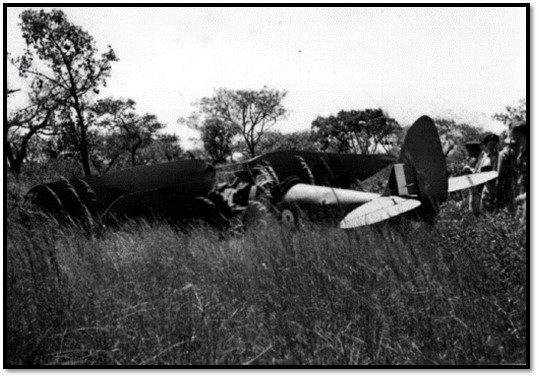
Photo by Gordon Dodd courtesy of Richard and Peter Dodd – a Tiger Moth after a crash landing in the Matabeleland bush
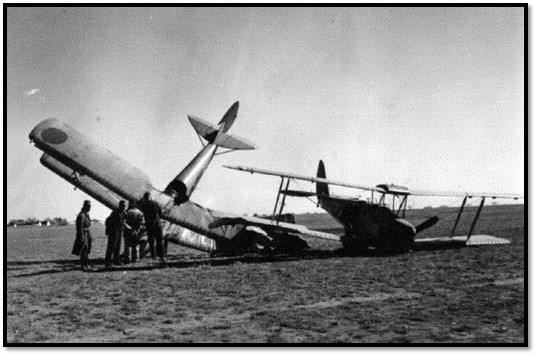
Photo by Gordon Dodd courtesy of Richard and Peter Dodd – this illustrates why Southern Rhodesia was chosen for air training - good weather, clear skies and good visibility
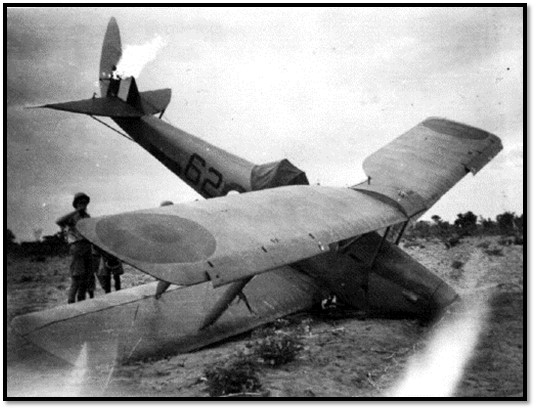
Photo by Gordon Dodd courtesy of Richard and Peter Dodd – Tiger Moth 62 appears to have crash landed on soft sand and the undercarriage has collapsed
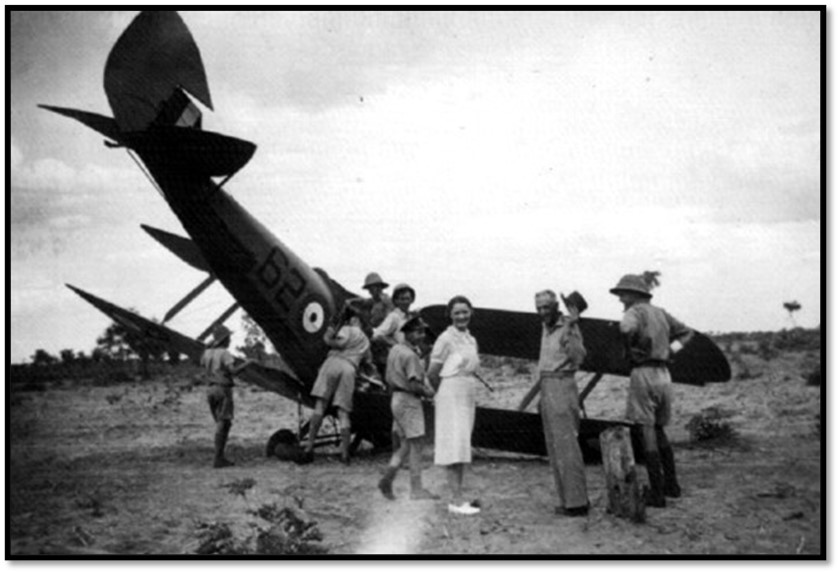
Photo by Gordon Dodd courtesy of Richard and Peter Dodd – Tiger Moth 62 from another angle and largely intact - perhaps a farmer and his wife in the foreground
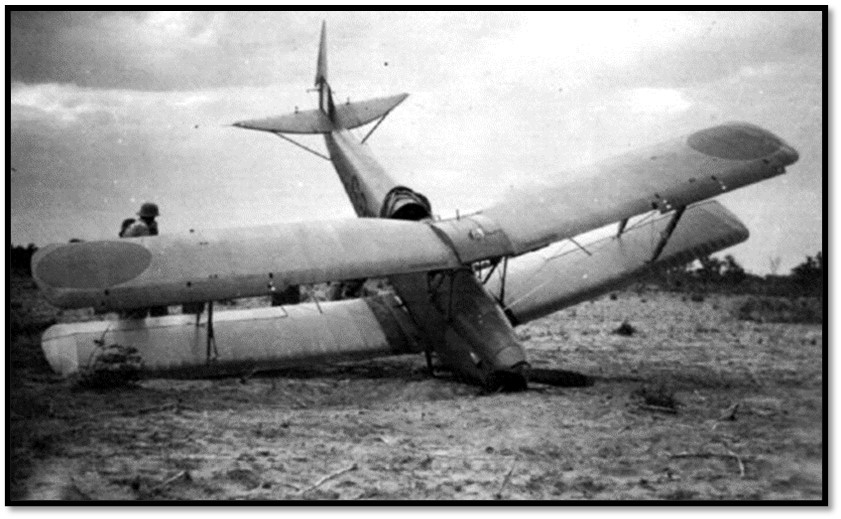
Photo by Gordon Dodd courtesy of Richard and Peter Dodd – this is likely Tiger Moth 62 from a front angle

Photo by Gordon Dodd courtesy of Richard and Peter Dodd – although upside down, the airframe appears largely intact. The same Tiger Moth 56 from different angles
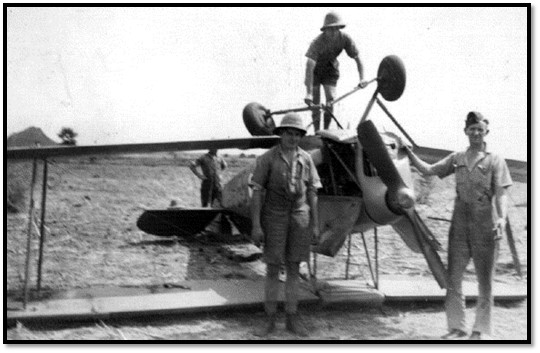
Photo by Gordon Dodd courtesy of Richard and Peter Dodd – another crash landing where the undercarriage has collapsed and the Tiger Moth has flipped over, but remains largely intact
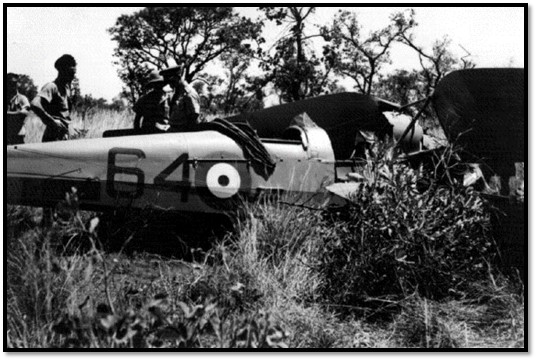
Photo by Gordon Dodd courtesy of Richard and Peter Dodd – the undercarriage and wings of Tiger Moth 64 have collapsed, but the fuselage is intact and upright
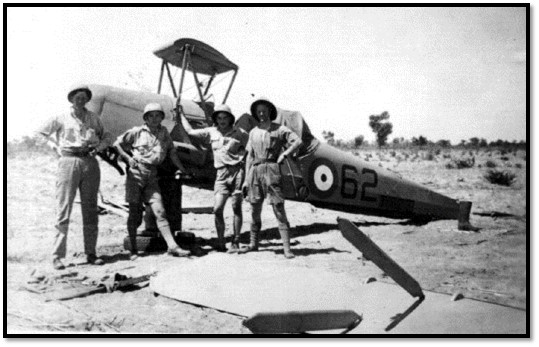
Photo by Gordon Dodd courtesy of Richard and Peter Dodd – Tiger Moth 62 without its wings and tail removed, the pilot has chosen a flat treeless piece of ground for the crashlanding
Tiger Moth crashes that probably resulted in fatalities
The following extract is from the diary of a young Rhodesian, who was later killed when serving with 237 Squadron in Italy and written while he was training with the RATG.
“17 November. A very sad thing has happened. J.F, a bloke I know well on our course was killed on night flight last night. He was on cross-country to Gatooma and crashed into the deck quite heavily. There are various reports of the accident, ranging from engine failure to his having inadvertently fired his Verey pistol inside the cockpit. Two pupils on the same cross country noticed it…one heard a faint R.T. message about someone ‘going down’ and another so an explosion on the ground near Beatrice, which must have been the crash. Whatever the cause, it is a darn shame - old Jack was one of the best and well-liked by all of us. He was the last chap, I should say, to do anything stupid or to lose his head, so goodness knows what did happen. They aren't likely to find out either, I don't think, as the kite is a complete wreck.
19 November… I know it is awfully easy to get into all sorts of queer positions at night and not to know about it. Last night really was pitch black - I did across-country myself, and there was not a sign of the horizon on which to keep straight and owing to thick cloud you couldn't see any lights on the ground that might have given you a clue where you were, or whether you were the right way up. Perhaps J. panicked and trusted his senses rather than the instruments until it was too late. Gosh, it's a poor show that we should lose two blokes on two successive flying nights. They say these things always go in threes - I wonder who's next? Yes, it's a bad business. It wouldn't be a bad thing at all to be in some nice safe drop like the paratroopers!”[iv]
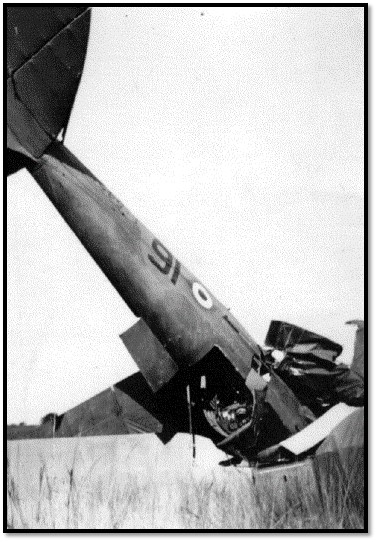
Photo by Gordon Dodd courtesy of Richard and Peter Dodd – Tiger Moth 16 has lost both wings and the front seat looks crushed. The pilot sat in the back seat as it gave a better centre of gravity when being flown solo and has all-round better visibility
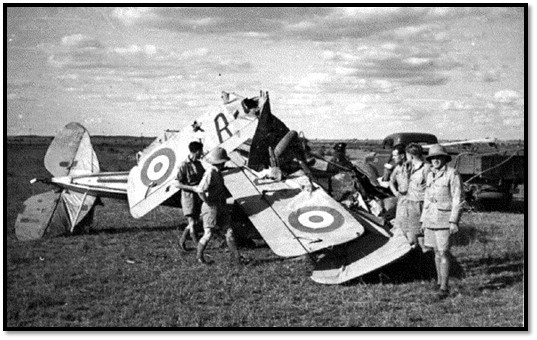
Photo by Gordon Dodd courtesy of Richard and Peter Dodd – the Tiger Moth has collapsed its undercarriage and then flipped on its back, the wings have collapsed with serious concerns for the pilot and instructor
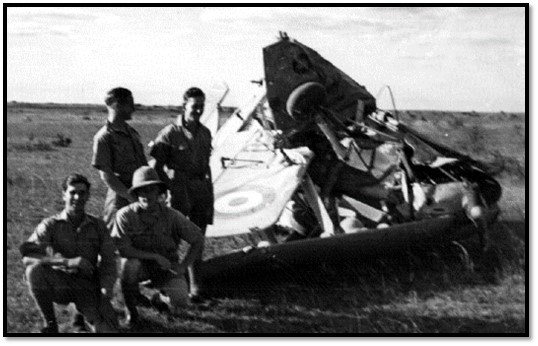
Photo by Gordon Dodd courtesy of Richard and Peter Dodd – a very badly crushed Tiger Moth probably resulting in fatalities
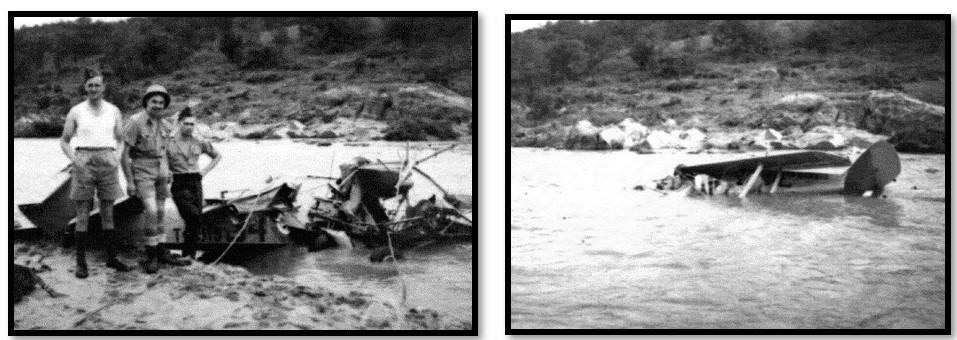
Photo by Gordon Dodd courtesy of Richard and Peter Dodd – remains of the a badly smashed Tiger Moth that probably resulted in fatalities being taken from a river
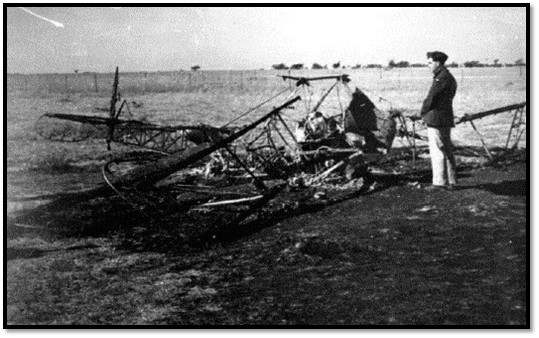
Photo by Gordon Dodd courtesy of Richard and Peter Dodd – remains of a Tiger Moth that crashed and caught fire
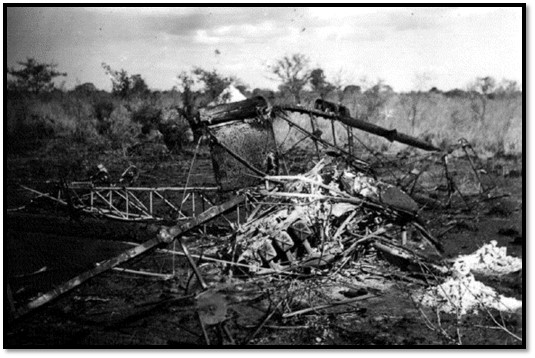
Photo by Gordon Dodd courtesy of Richard and Peter Dodd – another burnt out wreck of a Tiger Moth that caught fire
Zimbabwe (formerly Southern Rhodesia) Commonwealth War Graves Commission (CWGC) Cemeteries
The major cemeteries referred to with RATG burials are listed below. Other isolated graves exist commemorating the lives of individuals trainee pilots and these can be found on the CWGC website (https://www.cwgc.org/)
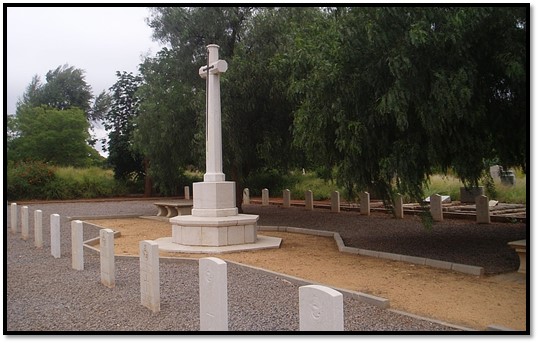
Athlone CWGC Cemetery, Bulawayo (GPS 20° 07´18"S 28° 35´ 36" E)
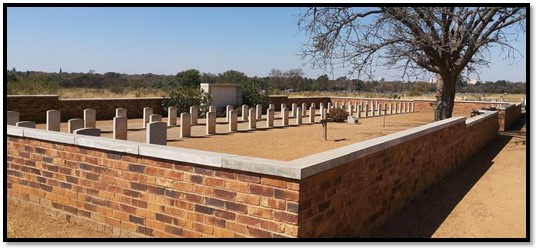
Lady Stanley CWGC Cemetery, Bulawayo (GPS 20° 07´34"S 28° 34´ 46" E)
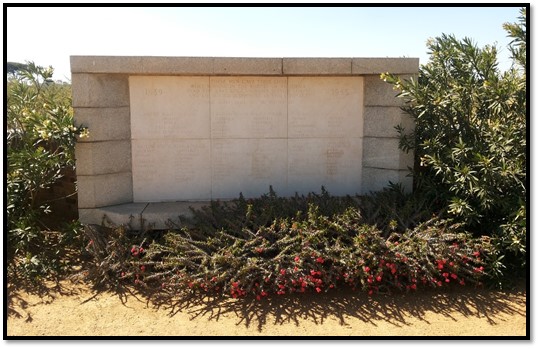
Bulawayo African CWGC Memorial, Bulawayo (GPS 20° 07´34"S 28° 34´ 46" E)
The above memorial is situated within the Lady Stanley CWGC Cemetery, Bulawayo.
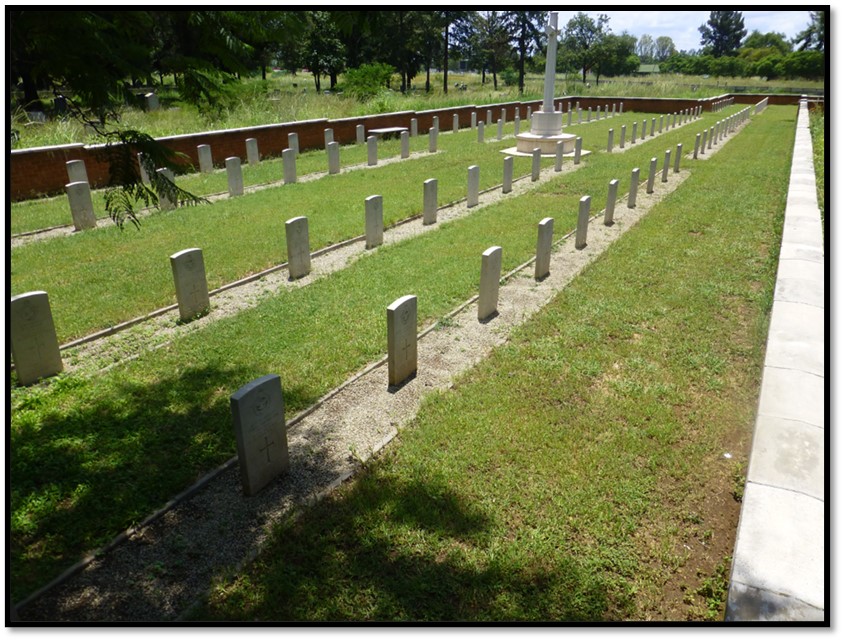
Gweru formerly Gwelo CWGC Cemetery (GPS 19° 26´58"S 29° 48´ 10" E)
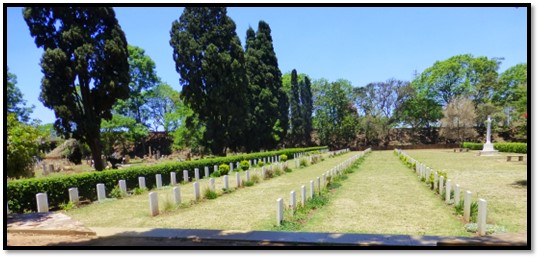
Harare formerly Salisbury Pioneer CWGC Cemetery, (GPS 17° 50´53"S 31° 02´ 20" E)
For individual names of those airmen and others who died doing war service in Southern Rhodesia, now Zimbabwe view the Commonwealth War Graves Commission website (https://www.cwgc.org/) or contact the author on www.zimfieldguide.com who has photographs of all the CWGC memorials at Harare and Gweru.
Roll of Honour and Airforce honours and awards
Any reader who wishes to have the details of those Southern (Zimbabwe) and Northern Rhodesians (Zambia) who gave their lives KIA or KOAS, was taken POW, or received British and foreign awards whilst serving in the various Air force units is advised to check Appendix 3 and 5 of A Pride of Eagles or contact the website as the author has a copy.
References
Commonwealth War Graves Commission website (www.cwgc.org)
J.F. MacDonald. The War History of Southern Rhodesia 1939-45. Rhodesiana Reprint Library – Silver Series Vol 10 and 11. Books of Rhodesia, Bulawayo 1976
B. Salt assisted by P. Cooke and W. Sykes. A Pride of Eagles. The Definitive History of the Rhodesian Air Force 1920-1980. Covos Day, Johannesburg and London, 2001
Notes
[i] Gordon Dodd who took the photos of the crashed aircraft whilst he was based in Southern Rhodesia at Induna airfield, Bulawayo in Matabeleland. He was born in December 1919 and lived in what was at that time a small village in Cumbria called Wigton. On leaving school at the age of 14 he became a motor mechanic and electrician, the garage where he worked appeared to be the source of all local trades!
Gordon spent most of his wartime years with the Rhodesian Air Training Group (RATG) at Induna airfield, Bulawayo in Southern Rhodesia. In his photo album is a pass for Port Elizabeth docks (present-day Gqeberha) dated 24 January 1941 – possibly the date he arrived in South Africa before taking the train journey to Bulawayo. He met his wife Evelyn (née Foster) in South Africa (presumably whilst on leave), she was a Petty Officer in the Women’s Royal Navy based in Joburg and they married in Sheffield (her home city) in August 1946. Their first son Richard was born in 1947 and his brother Peter a few years later.
Despite a never-ending love for military aeroplanes and particularly the De Haviland Tiger Moth which together with the Fairchild Cornell were the RATG mainstay at Induna, Gordon did not stay in the aircraft sector although he and Evelyn ended their years living in the next village to RAF Cranwell. https://www.raf.mod.uk/our-organisation/stations/raf-college-cranwell/ so he was close to what he loved. After the war he was a mechanic working on large Dennis trucks, then an inspector of bullet-proof steel in Sheffield steel works for the Ministry of Defence and finally a Ministry of Transport driving examiner, rising to become the chief examiner for the whole of South Yorkshire.
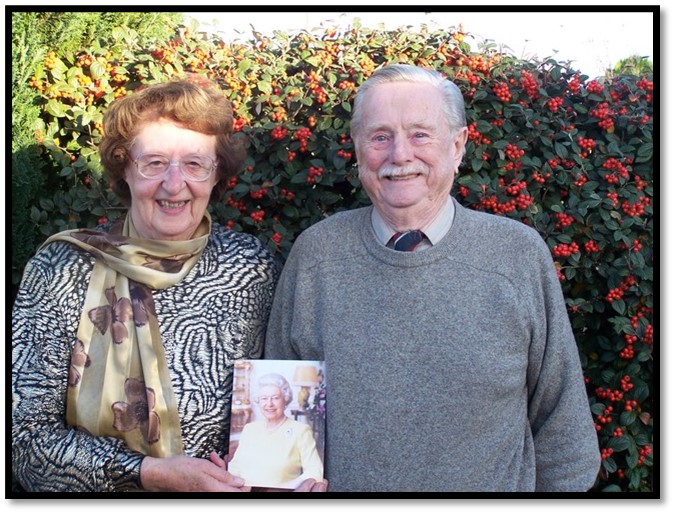
Evelyn and Gordon Dodd with a signed photograph of Queen Elizabeth II on their 60th Wedding Anniversary
His son Richard has two signed cards from the late Queen Elizabeth, one to celebrate their 60 years of marriage, the other for Evelyn’s 100th birthday, she passed away at the age of 101 in 2022, Gordon having predeceased her at Lincoln Hospital at the age of 94 in July 2014.
[ii] Wikipedia. The de Havilland DH.82 Tiger Moth first flew in the 1930’s and was operated by the Royal Air Force (RAF) and 25 other air forces as a primary trainer aircraft. It remained in service until replaced by the De Haviland Chipmunk during the early 1950’s. By the outbreak of the WWII a total of 1,424 Tiger Moths had been completed by both domestic and overseas manufacturing efforts. In 1941 manufacturing moved from the Hatfield factory to Morris Motors Limited ar Cowley, Oxford and by 1945 when British Tiger Moth production ended a further 3,433 had been built. Thousands of Tiger Moth airplanes were built in Canada, Australia and New Zealand with local modifications such as an enclosed cockpit.
[iii] https://www.warplane.com/aircraft/collection/details.aspx?aircraftId=17 In early 1942, an agreement was signed between the Canadian Government and Fairchild Aircraft, which licenced Fleet Aircraft of Fort Erie, Ontario to construct the PT-26 Cornell in Canada. The first 800 Cornells used by the RCAF were supplied from Fairchild, until production commenced at Fort Erie in November 1942. By the end of the war in 1945, 2,853 Cornells had been built by Fleet - 1,565 for the RCAF and 1,288 for the RAF.
PT-26 Cornells were flown at many of the Elementary Flying Training Schools (EFTS) of the British Commonwealth Air Training Plan, where they replaced the Fleet Finch and the de Havilland Tiger Moth biplane trainers. After the Second World War, many Cornells were sold to the civilian market, but some were retained by the RCAF, where they were finally retired in 1948.
[iv] Leading Aircraftman John Addison Frith (J.R.) aged 22 of the RAFVR KOAS on 16/11/1943 and buried at the Harare Pioneer Cemetery (Grave 117) Next to him is buried Aircraftman 2nd Class William Brackenridge aged 20 of the RAFVR KOAS on 18/11/1943
